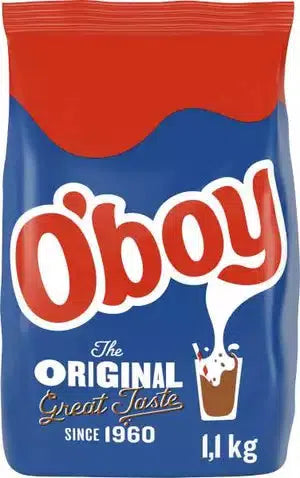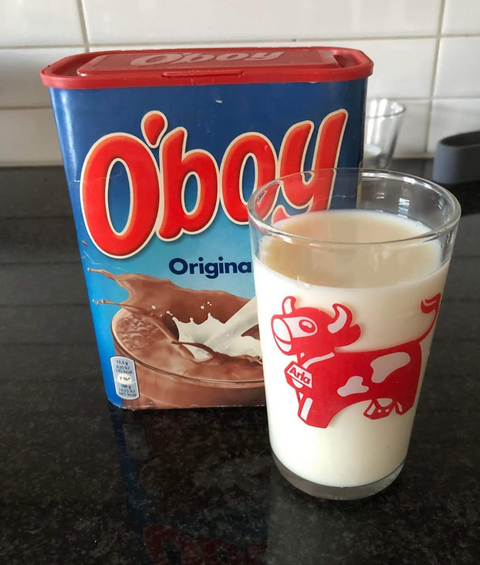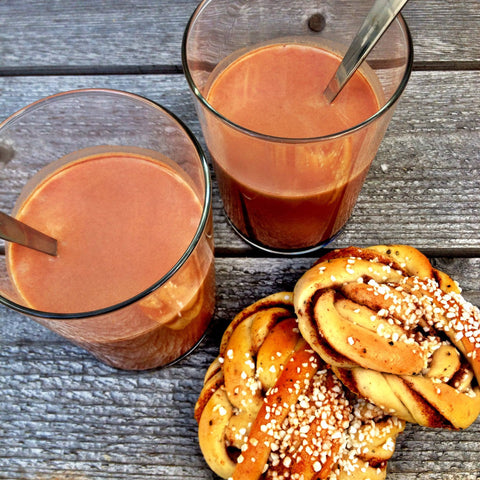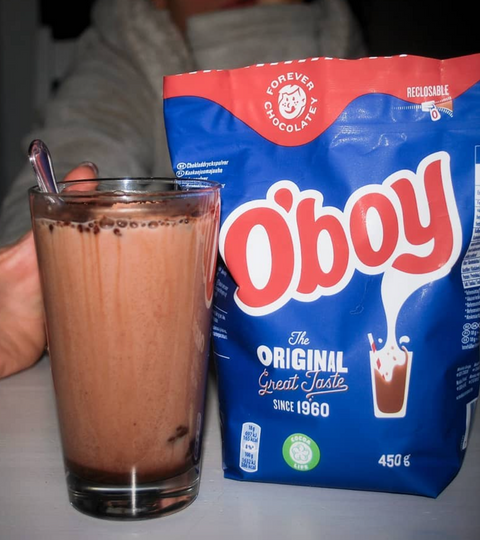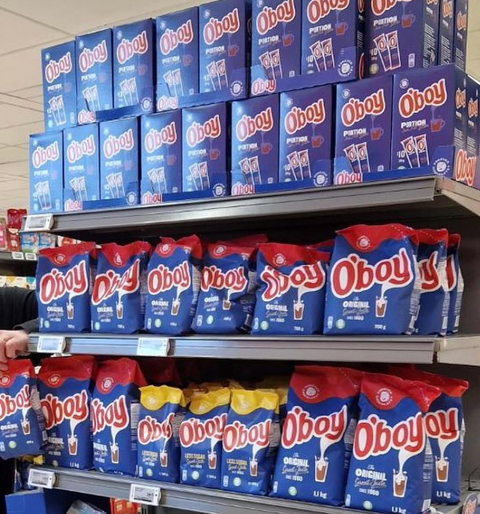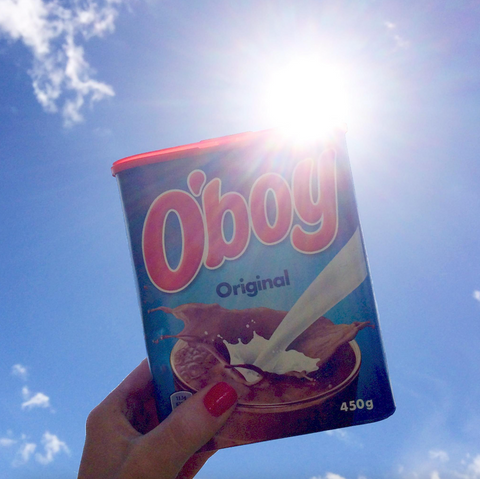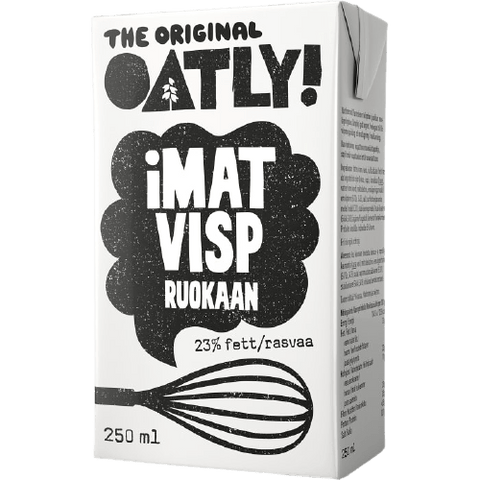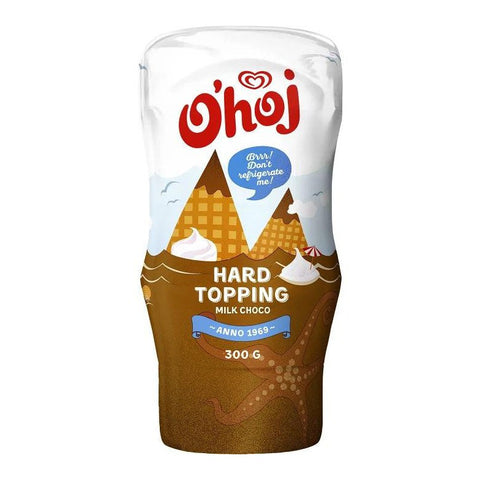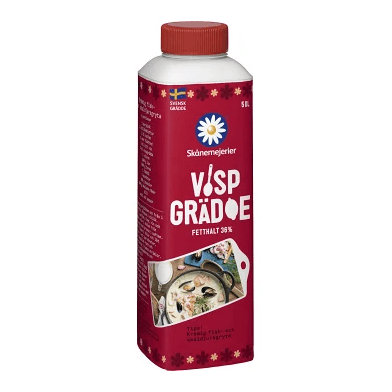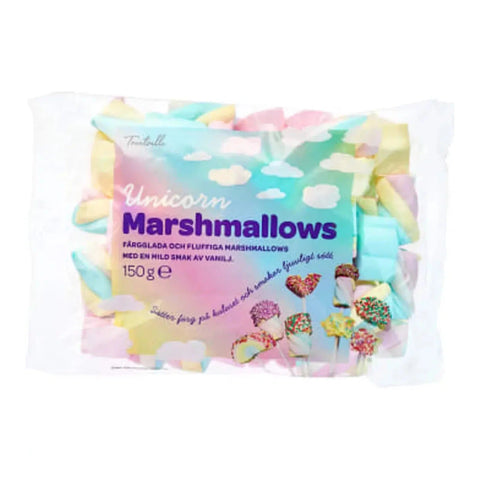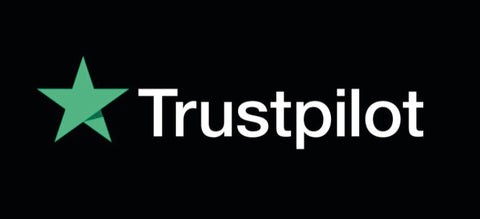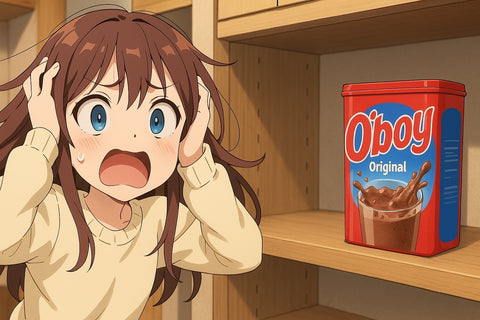

O’boy Panic: When Sweden’s Cocoa Cravings Collided with Chaos !
“No O’boy for breakfast?” For many Swedes, this was more than an inconvenience—it was a full-blown existential crisis. A country that casually consumes two million glasses of the chocolatey drink daily suddenly found itself in the grip of a nationwide shortage. Social media erupted, morning routines were wrecked, and supermarkets began to resemble post-apocalyptic movie sets—minus the zombies, plus panicked parents.
But what really happened? How did Sweden, a land known for its well-oiled systems and fika-filled calm, end up in a cocoa crisis? Let’s dive into the cultural phenomenon that is O’boy, what caused its temporary disappearance, and why it hit Swedes right in the childhood.

🇸🇪 Fueling Sweden Since 1960
O’boy isn’t just a chocolate drink. It’s a rite of passage. Since 1960, it’s been a staple on breakfast tables across Sweden—from cozy family kitchens to school cafeterias and scout camps in the wild. Stirred into cold milk in summer or hot milk after a ski trip, O’boy has become part of the national fabric.
The name might sound American, but the nostalgia it triggers is deeply, unmistakably Swedish. The classic red-and-blue packaging, the smell when you open a new bag, the satisfying clink of the spoon in the glass—it’s sensory comfort at its finest. Everyone has a story tied to O’boy: that one cousin who always used too much powder, or the secret spoonful before bed.
For Swedes abroad, it’s even more iconic—a taste of home packed into powder form. So when shelves went bare in late 2024, it wasn’t just about chocolate milk disappearing—it was about losing a warm piece of everyday life.
🚨 From Empty Shelves to Meme Mayhem
At first, it seemed like a fluke. Maybe a shipment delay. But by early December 2024, the truth hit hard: O’boy was gone from nearly every supermarket in the country. Panic slowly crept in, as shoppers began reporting empty shelves and confused store clerks. It wasn’t just Stockholm or Gothenburg—it was nationwide.
Cue the memes.
Swedes responded the only way they knew how—with dry humor and dramatic understatement. Social media lit up with photos of barren cocoa aisles, sad-faced kids, and captions like “Day 6: Still no O’boy. Spirits low. Milk untouched.” Some compared the shortage to the 2020 toilet paper panic, while others joked that Sweden’s true grit was finally being tested—not by inflation, not by snowstorms, but by an O’boy crisis.
It wasn’t long before the press picked it up. The phrase “O’boykrisen” trended again, recalling the infamous 2018 shortage, and this time, people braced for a long, chocolate-less winter.
📆 How It All Went Down
The timeline of the 2024–2025 O’boy shortage reads like a slow-burn thriller.
- Autumn 2024: Subtle signs of low stock pop up. Customers assume a small hiccup.
- Dec 9, 2024: Media confirms a widespread shortage. People start hoarding.
- Mid-December: Mondelēz, the brand behind O’boy, issues a statement: “Cocoa bean supply issues” are slowing production. Panic intensifies.
- Late December: Coop announces it’s receiving limited 1.1kg bags. Some stores ration purchases. Others post handwritten signs apologizing for the absence.
- January 2025: No end in sight. Deliveries are gone within minutes. Some stores receive nothing for weeks.
- Late January: Whispers of recovery—one store in Östersund hints production could ramp up in mid-February.
- February 2025: The comeback begins. Restocks trickle in, and social media celebrates the sight of O’boy on shelves again.
- March 2025: Crisis winds down. Shelves refill (slowly), though demand remains sky-high.
The saga lasted months, but for many families, it felt like a lifetime.

😅 Desperate Times, DIY Mixes & Dank Memes
Swedes might be calm and collected on the outside, but when push comes to shove—and O’boy runs out—creative chaos ensues.
Parents rationed their last scoops like survivalists, storing them in secret containers or measuring them with unsettling precision. Some kids went cold turkey. Others attempted DIY versions: cocoa powder, sugar, milk, maybe a pinch of salt—yet most admitted, “It’s not the same.” One viral comment summed it up perfectly: “Tried making my own. Just tasted like regret.”
On resale platforms, empty O’boy tins showed up with absurd price tags—some even bundled with a spoon “for authenticity.” Whether satire or serious, these listings captured the surreal, almost comical nature of the crisis.
Memes exploded. One showed the Swedish flag at half-mast next to an empty O’boy jar. Another imagined it as a Netflix drama: “Coming soon: A nation divided. A powder gone. O’BOY – The Series.” It was equal parts tragedy and comedy—and peak Swedish internet.
🌍 The Real Cocoa Culprit
So what caused all this mayhem? Turns out, it wasn’t a factory glitch or bad logistics—it was global.
Mondelēz confirmed that their cocoa supplier had suffered disruptions. And they weren’t alone. West Africa, which supplies over 60% of the world’s cocoa, was hit by a devastating mix of bad weather, crop disease, and political instability in 2024. The result? The worst cocoa shortage in decades.
Cocoa prices soared. Global supply chains staggered, still recovering from the pandemic’s aftershocks. Producers everywhere were affected—from big brands like Marabou to small artisan chocolatiers. For O’boy, the shortage meant reduced production and hard decisions about where to ship limited stock.
Sweden, despite its love for the drink, couldn’t escape the ripple effects of a global cocoa crisis. It was a reminder that even the most local rituals are tied to an interconnected, fragile global system.
Sweden’s balanced approach to coffee—integrating global trends while maintaining time-honored traditions—has allowed it to remain a leader in the coffee world. Swedes have embraced specialty coffee without abandoning their love for simple, well-brewed cups, ensuring that their coffee culture continues to evolve without losing its essence.
O’boy + Kanelbulle = 💘
If there’s one pairing that truly captures the essence of Swedish comfort, it’s a warm kanelbulle and a glass of O’boy. The rich cocoa sweetness mixed with the spiced swirl of cinnamon bun creates a nostalgic combo that’s both humble and heart-melting. It's the kind of snack that brings generations together—kids slurping from tall glasses, grandparents dunking the bun like it’s an art form. Forget fancy desserts—this is fika at its most authentic, most beloved, and most “Swedishness.” In the wake of the shortage, many realized that it wasn’t just the drink they missed—it was the ritual, the memories, and the cozy joy of a moment shared over chocolate and cinnamon.
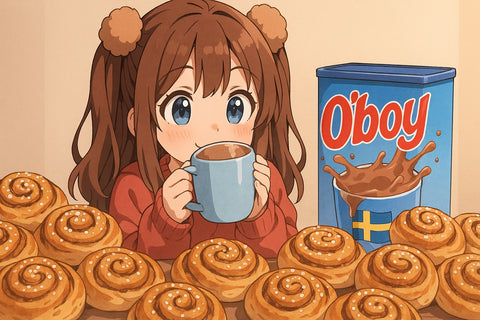
❤️ Why We Care So Much
To outsiders, the panic might seem strange. After all, it’s just chocolate milk, right?
But for Swedes, O’boy isn’t “just” anything. It’s morning routines, cozy memories, and cultural identity—all stirred into a glass of milk. It’s part of what makes a regular day feel right. When it vanished, it left more than empty shelves—it left a nostalgic void.
This shortage wasn’t about indulgence. It was about the little rituals that give us comfort, especially during uncertain times. O’boy became a symbol—not just of supply chain fragility, but of how important simple pleasures really are.

🛒 O’boy Is Back (Kind Of)
As of March 2025, the worst appears to be over. O’boy is gradually returning to shelves across Sweden, and although some regions still report fast sellouts, the tide has turned.
Mondelēz says production is stabilizing, and the cocoa pipeline is reopening. It’ll take a little longer for full availability, but the signs are hopeful.
For now, Swedes can breathe a little easier. The chocolate milk is flowing again. And if there’s one thing this crisis taught us, it’s that even the smallest products—when woven into our daily lives—carry big meaning.
So go ahead, scoop generously, swirl with care, and savor that first sip.
Long live O’boy.

